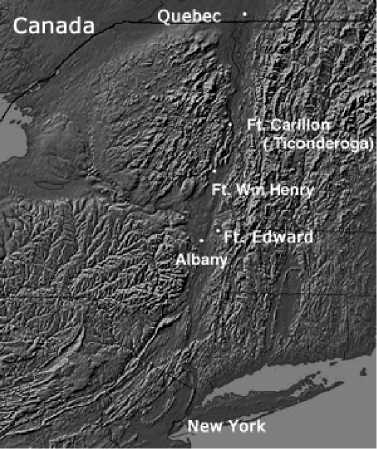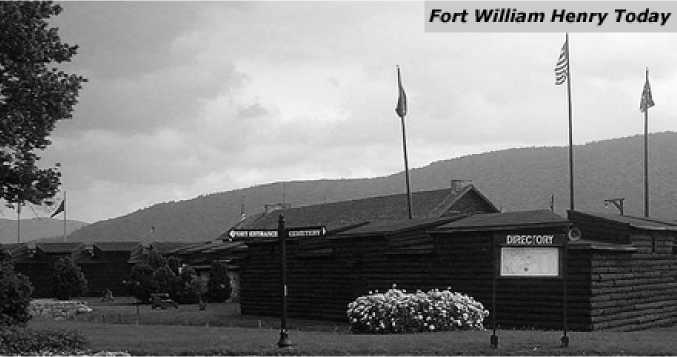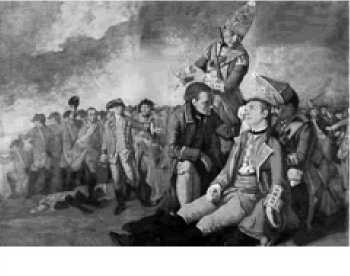The last and most important of all the colonial wars with the French and Indian War, which was fought on all corners of the globe. Unlike previous conflicts, however, this last of the imperial wars began in America. Competition for control of the interior of North America had intensified during the previous decades, and by 1754 the French had made great inroads, extending their control from Canada down through the Ohio and Mississippi Valleys as far as New Orleans. The British thus found themselves constrained by the hated French "papists" (Catholics) to the territory between the Atlantic coast and the Appalachian Mountains.
In 1754 Lieutenant Governor Robert Dinwiddie of Virginia sent young Lieutenant Colonel George Washington on a mission to press the French not to advance further. Washington reported that the French had no intentions of removing themselves. Dinwiddie then ordered construction of a fort on the site of present-day Pittsburgh, but the French captured the site and built Fort Duquesne. Washington's attempt to retake Fort Duquesne with Virginia militia was unsuccessful. In 1755, British General Edward Braddock, accompanied by Virginia militia under Washington, set out to capture Fort Duquesne and drive the French out of the Ohio Valley. Braddock met the French east of the fort and was mortally wounded during his defeat in the Battle of the Wilderness. Washington organized and led the retreat of the defeated army. Disgusted with Braddock's performance and frustrated with his subordinate position, Washington's animosity toward the British began to take shape.15 a

War was officially declared in 1756. The fighting spread to Europe, and things continued to go badly for the British in North America. The French sent a new commander, the Marquis de Montcalm, along with reinforcements, to Canada. The colonials built Fort William Henry north of Albany, New York, on Lake George to defend against French attacks from Canada, but they failed to take Fort Carillon (Ticonderoga), or Crown Point. Soon, however, the fortunes of war began to turn in favor of the British and their American compatriots.
In 1757 Montcalm moved against Fort William Henry on Lake George; the fort was commanded by British Lt. Col. George Monro. Following a siege, during which reinforcements failed to reach the fort, Monro was forced to surrender. Monro was offered generous terms by Montcalm and set out on a retreat to Fort Edward, along with the colonial militia who had joined in the defense of Fort William Henry. As the British soldiers and militia were marching away from the fort, they were attacked by Indian allies of the French, and many were massacred or captured.
Fart Witiiam Henry Today
The story of the Battle of Fort William Henry and the "massacre" has been told by James Fenimore Cooper in The Last of the Mohicans and in the 1992 film by Michael Mann made from the book.16 Although the story is romanticized in the movie, the moods and attitudes of the British, colonists and Indians are convincingly depicted. Fort William Henry was reconstructed based on the original plans, which were discovered in the 1950s when archeologists were excavating the site. The upper New York "Independence Trail" would see major action twenty years

Later during the Saratoga campaign, and in the War of 1812.
British Prime Minister William Pitt assumed power in 1757 and committed the government to carrying out whatever measures were necessary to prosecute the war. Realizing that the colonies were the key to British power, Pitt decided to concentrate on the American campaigns. He sent substantial reinforcements to America under the leadership of Generals Lord Jeffrey Amherst and James Wolfe. A campaign to retake for Ti-conderoga was unsuccessful, but Brigadier General John Forbes marched on Fort Duquesne, forcing the French to blow it up. Forbes occupied the abandoned site, rebuilt the fort and named it Fort Pitt. Meanwhile Amherst and Wolfe had recaptured Louisburg on Nova Scotia.
The year 1759 became known as annus mirabilis, the "year of miracles," when the British turned the tables on the French for good. First the British moved up through the Lake

George-Lake Champlain waterway and took forts Ticon-deroga (Carillon) and Crown Point. Supported by Amherst, General Wolfe then planned and executed a brilliant amphibious campaign by crossing the St. Lawrence River and moving his army by stealth up steep slopes to the Plains of Abraham outside the city of Quebec. Wolfe coaxed Montcalm to come out of the city and attack the British with a force of about 4,500 troops. Wolfe's well disciplined army won a decisive battle, but both he and General Montcalm were killed. When Jeffrey Deaih of General Wblfetj/eefvsrnjji Wfes/ Amherst captured Montreal in 1760, French control of
Canada was finished.
By the Treaty of Paris of 1763, Great Britain gained all of North America east of the Mississippi, including French Canada and Spanish Florida. The Treaty also brought an end to the Seven Years War and restored peace to Europe. Great Britain now commanded a worldwide empire consisting of thirty one colonies stretching from North America to India and stood "astride the world like a colossus." But the cost of all those years of war meant that Great Britain was deeply in debt—the stage now set for the coming of the American Revolution.




 World History
World History









